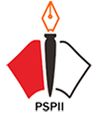Development of Technology-Based Teaching Materials in Islamic Religious Education Subjects
DOI:
https://doi.org/10.15575/ath.v9i1.30515Keywords:
Technology, Teaching Materials, Islamic Education, Four-D Development Model (4d)Abstract
The purpose of this study is to describe and analyze the development of teaching materials, and the level of feasibility of using technology-based teaching materials in learning Islamic Religious Education. This research is a type of research and development (Research and Development). By using the four-D (4-D) model developed by Thiagarajan (Define, Design, Develop, and Disseminate). The results of this study, according to media and material experts, show that the teaching materials developed have very feasible criteria with an average score of 4.65, both according to media experts and material experts based on their aspect assessment. Meanwhile, according to students' responses, they have an average score of 4.25 with very decent teaching material assessment criteria.
Â
Tujuan dari penelitian ini adalah untuk mendeskripsikan dan menganalisis pengembangan bahan ajar, dan tingkat kelayakan penggunaan bahan ajar berbasis teknologi dalam pembelajaran Pendidikan Agama Islam. Penelitian ini merupakan jenis penelitian dan pengembangan (Research and Development). Dengan menggunakan model four-D (4-D) yang dikembangkan oleh Thiagarajan (Define, Design, Develop, and Disseminate). Hasil penelitian ini, menurut ahli media dan ahli materi, menunjukkan bahwa bahan ajar yang dikembangkan memiliki kriteria sangat layak dengan skor rata-rata 4,65, baik menurut ahli media maupun ahli materi berdasarkan aspek penilaian mereka. Sementara itu, menurut respon siswa, bahan ajar tersebut memiliki skor rata-rata 4,25 dengan kriteria penilaian bahan ajar yang sangat layak.
References
Admelia, M., Farhana, N., Agustiana, S. S., Fitri, A. I., & Nurmalia, L. (2022). Efektifitas penggunaan aplikasi Canva dalam pembuatan modul pembelajaran interaktif Hypercontent di Sekolah Dasar Al Ikhwan. KACANEGARA Jurnal Pengabdian Pada Masyarakat, 5(2), 177. https://doi.org/10.28989/kacanegara.v5i2.1087
Aras, I., & Arhas, S. H. (2022). Lecture Methods During the New Normal Era. Jurnal Office, 8(1), 11. https://doi.org/10.26858/jo.v8i1.32079
Awrus, S., Wikarya, Y., Wisdiarman, & Syafei. (2020). The Development of Teaching Materials for Micro Teaching Assisted by Learning Videos to Improve Students’ Teaching Practice Abilities. 463, 8–13. https://doi.org/10.2991/assehr.k.200819.002
Aziz, M. K. (2015). Pengembangan media pembelajaran interaktif berbasis android untuk meningkatkan partisipasi dan hasil belajar siswa pada mata pelajaran pai. 1–65. Retrive From https://digilib.uin-suka.ac.id/id/document/369823
Creswell. (2023). Qualitative Data Analysis. Implementation of the International Plan of Action to Deter, Prevent and Eliminate Illegal, Unreported and Unregulated Fishing., 320–357. https://doi.org/10.4060/cc6434en
Devi, M. Y., & Rusdinal, R. (2023). Validation of Digital Learning Media to Improve the Basic Literacy Skills of Low-Grade Elementary School Students. Jurnal Obsesi : Jurnal Pendidikan Anak Usia Dini, 7(1), 119–129. https://doi.org/10.31004/obsesi.v7i1.3713
Laratmase, A. J., Pramono, S. A., Astuti, E. D., Laratmase, A. J., Pramono, S. A., Hamzanwadi, U., Majalengka, U., & Purwokerto, U. W. (2023). The Development Of E-Module Based on Science Writing Heuristic (SWH) To Improve the Effectiveness of Teaching and Learning Activities. Journal for Educators, Teachers and Trainers, 14(3), 533–538. https://doi.org/10.47750/jett.2023.14.03.064
Mulyadi, Syahrul, R., Atmazaki, & Agustina. (2020). The Development of E-Modules Based on Adobe Flash for Indonesian Subjects at IAIN Bukittinggi. Journal of Physics: Conference Series, 1471(1). https://doi.org/10.1088/1742-6596/1471/1/012002
Ordu, U. B.-A. (2021). The Role of Teaching and Learning Aids/Methods in a Changing World. Bulgarian Comparative Education Society (BCES), 19, 210–216. Retrive From https://files.eric.ed.gov/fulltext/ED613989.pdf
Shofa, A., Su’Ad, & Murtono. (2021). Development of Learning Media Technology Based on Natural Science Local Wisdom Materials. Journal of Physics: Conference Series, 1823(1). https://doi.org/10.1088/1742-6596/1823/1/012080
Subhan, & Novianti, U. (2021). Analisis Metode Pembelajaran yang Dapat Digunakan Pada Pembelajaran PAI. Journal Evaluation in Education (JEE), 1(3), 109–114. https://doi.org/10.37251/jee.v1i3.133
Suwito, D., Perdana, R., & Hadiana, D. (2023). International Journal of Current Science Research and Review Development of LKPD Based on ExCluSiVE Learning Model to Improve Creative Thinking Skills in Mathematics Learning in Grade IV Elementary. 06(10), 6799–6806. https://doi.org/10.47191/ijcsrr/V6-i10-33
Syamriani, S., Jusniar, J., & Hardin, H. (2023). Development of E-modul Flipbook Buffer Solution Based On Discovery Learning Model. UNESA Journal of Chemical Education, 12(1), 8–16. https://doi.org/10.26740/ujced.v12n1.p8-16
Syatriana, E., Husain, D., Jabu, B., & Indonesia, M. (2013). A Model of Creating Instructional Materials Based on the School Curriculum for Indonesian Secondary Schools. 4(20), 10–19. https://doi.org/10.31219/osf.io/z8gf9
Tanggoro, U. (2015). the Use of Instructional Media To Improve Students’ Motivation in Learning English. Urip Tanggoro 100 Dialektika Journal, 3(1), 100–107. https://doi.org/10.58436/jdpbi.v3i1.70
Wilujeng, I., & Putri, T. S. Y. (2020). Development of SETS E-Module Integrated with POE Model for Science Learning. Journal of Educational Science and Technology (EST), 6(2), 252–264. https://doi.org/10.26858/est.v1i1.14735
Yulaika, N. F., Harti, H., & Sakti, N. C. (2020). Pengembangan Bahan Ajar Elektronik Berbasis Flip Book Untuk Meningkatkan Hasil Belajar Peserta Didik. JPEKA: Jurnal Pendidikan Ekonomi, Manajemen Dan Keuangan, 4(1), 67–76. https://doi.org/10.26740/jpeka.v4n1.p67-76
Downloads
Published
How to Cite
Issue
Section
License
Authors who publish with this journal agree to the following terms:
- Authors retain copyright and grant the journal right of first publication with the work simultaneously licensed under a Creative Commons Attribution-ShareAlike License that allows others to share the work with an acknowledgement of the work's authorship and initial publication in this journal.
- Authors are able to enter into separate, additional contractual arrangements for the non-exclusive distribution of the journal's published version of the work (e.g., post it to an institutional repository or publish it in a book), with an acknowledgement of its initial publication in this journal.
- Authors are permitted and encouraged to post their work online (e.g., in institutional repositories or on their website) prior to and during the submission process, as it can lead to productive exchanges, as well as earlier and greater citation of published work (See The Effect of Open Access).






